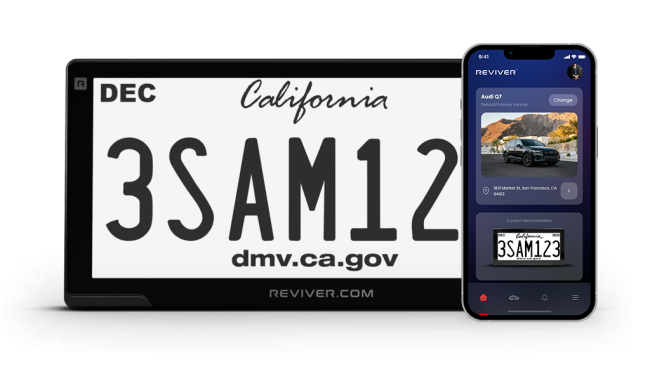
5 Fleet Technology Trends to Watch for 2023
Electrification is the most significant fleet technology trend right now. Most major automakers and heavy-equipment manufacturers have made substantial investments to shift their entire product portfolios from internal combustion engines to electric within the next 10 to 15 years.
But what are some emerging technology trends that aren’t making headlines but could significantly impact your fleet operations?
I recently spoke with Shannon Keck and Lindsay Wood, product managers with fleet management services provider Wheels Donlen, to get their outlook. They pointed to these five trends to watch.
1. Mobile Payments
The physical fuel card is going digital. So, watch for more fueling and charging stations to upgrade their point-of-sale systems to accept smartphone-enabled mobile payments.
Why? Besides offering more convenience for drivers, mobile payments eliminate fraud from skimming devices, which thieves attach to a pump’s credit card reader to steal account information.
“The fraud risk is very high when putting any plastic piece in a card reader. So, going mobile makes that process more secure because you bypass the reader,” Wood said. “Mobile payment also adds an extra layer of security because it uses biometrics for the driver to access the payment app on their phone.”
When will mobile payments at public fueling and charging stations become mainstream for fleets?
“We’re likely about five years out from universal acceptance since mobile payment availability is brand-driven and merchant-driven,” Wood said. “The big oil brands are close to 100% across the board with mobile payments because they’re larger and can afford the investment. But there are thousands of smaller franchises and mom-and-pop stations out there that may decide not to invest in that technology. They may think the upgrade costs far outweigh the fraud risk. So, it’s a matter of [the smaller stations’] decision to make that investment or not.”
2. Driver Tracking
Look for an increasing shift in telematics from asset-only tracking to asset-and-driver tracking.
This capability is significant for utility fleets with many pool vehicles. After all, when drivers share vehicles, how do you track who was operating which vehicles and when?
“Many companies are using pool management software, key fobs or barcodes to identify the driver of the vehicle,” Keck said. “If you don’t know who the driver is in that vehicle, at what time, you’re going to see a bunch of events associated with an individual vehicle, but not be able to identify who was driving it.”
Is connecting the driver with the asset a new development?
“The technology itself is not new. But how it’s being used continues to evolve,” Keck said. “In the early days, telematics was more about tracking the asset and understanding the utilization of that asset. But we’re starting to see more integration for capturing more data on the individual drivers of those vehicles. This way, fleets can gain a much better understanding of driver behavior.”
3. Digital Plates
Updating large numbers of tags is getting much easier. At least that’s the promise of digital license plates.
“The big advantage of digital plates is having real-time registration data in front of you,” Wood said. “When you think about it, the vehicle is legal for 11 months out of the year. But it’s that little window of time around the tag’s expiration where you can get concerned. Did I renew them on time? You can update digital tags on the vehicle remotely and in real time. This way, you don’t have to wait for the updated registration cards to be mailed and placed in the appropriate vehicles.”
Reviver (https://reviver.com), a digital plate manufacturer and service provider, said that digital license plates are legal for sale to consumers and fleets in Arizona, California and Michigan. They’re also legal in Texas but only for commercial fleet vehicles.
According to Reviver, its system allows fleets to batch registration renewals in a single transaction. And its digital tags offer integrated telematics with real-time location monitoring, geofencing with alerts, and trip and mileage tracking. The company also said the plates can withstand high-impact collisions and exposure to temperatures between 40 degrees below zero and 176 degrees Fahrenheit.
4. Keyless Entry
Watch for an increasing shift to keyless entry systems.
Why? “You’re not losing keys. You don’t have to manage the fleet pool program manually. And you’re able to associate the correct trips to the correct drivers,” Keck said.
How would the technology work?
“Rather than actively managing the keys through an office manager or key box hardware, you would use your mobile device with a code to access the vehicle. This can reduce the administrative support and cost needed to provide the drivers with access to the vehicle,” Keck said.
5. Video Telematics
As camera prices continue to fall, look for the rise of telematics and cameras being integrated within a single platform.
“Certain third-party telematics providers are doing this today. And we’re also seeing OEMs looking into how they can use the cameras already on the vehicle to start being able to integrate that information into their connected vehicle offering,” Keck said.
- Could Vehicle-to-Grid Technology Help Smooth the Transition to All-Electric?
- What’s New in All-Terrain Utility Vehicles
- 5 Fleet Technology Trends to Watch for 2023
- Effective Strategies for Keeping Your Top Technicians
- Crafting a Telematics RFP
- Is the Future of Tires Airless?
- Best Practices for Preventive Maintenance
- Knowing When Not to Press ‘Send’

